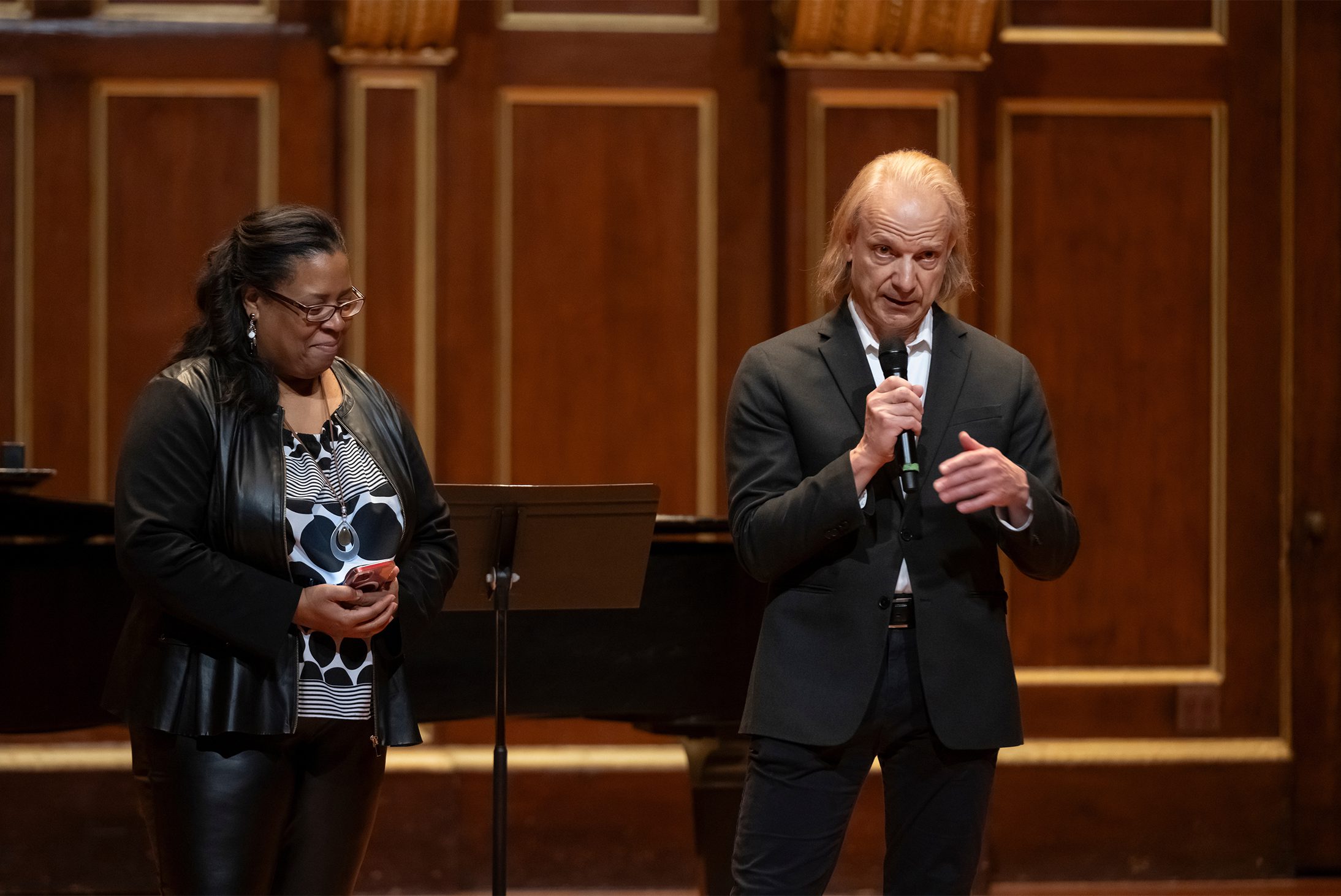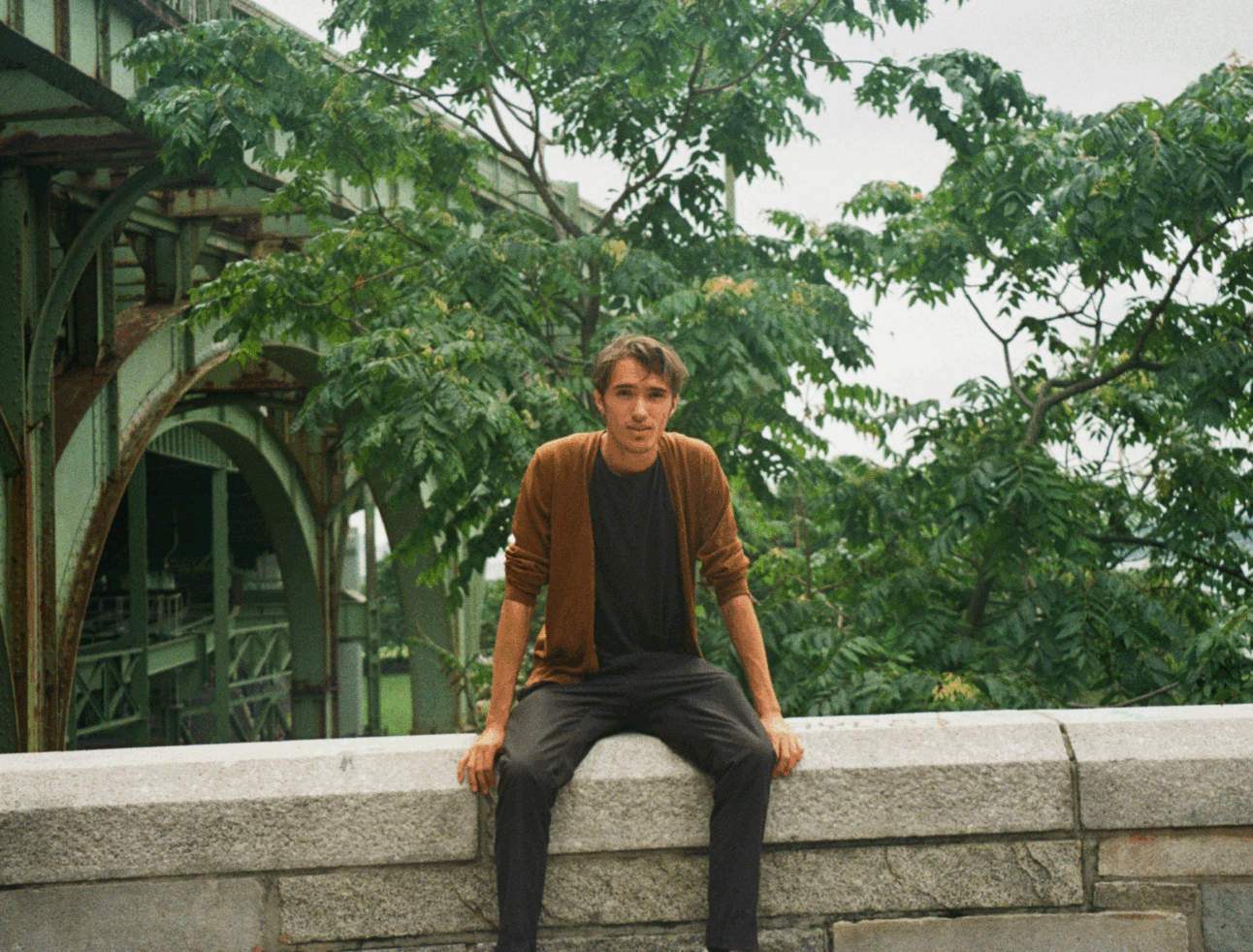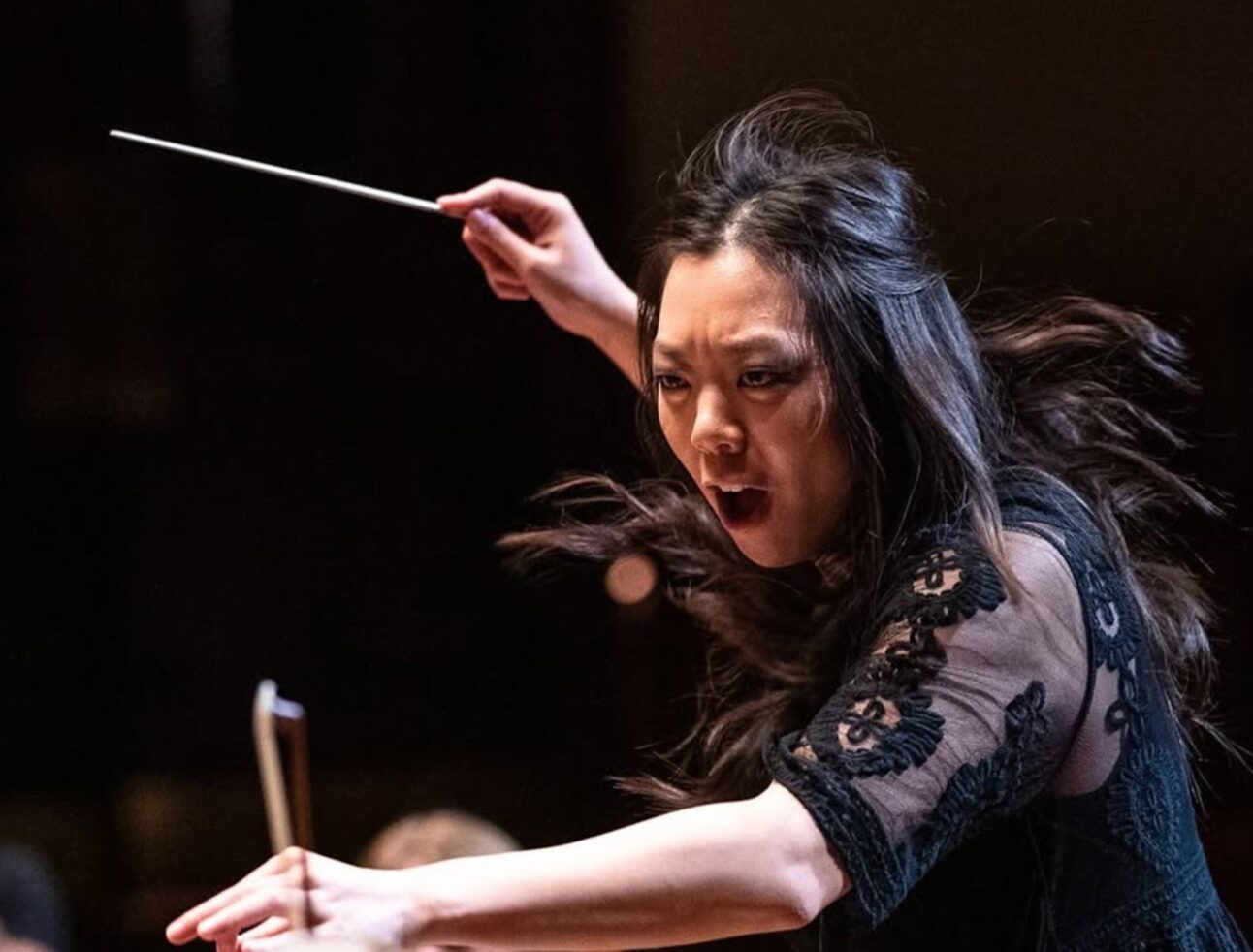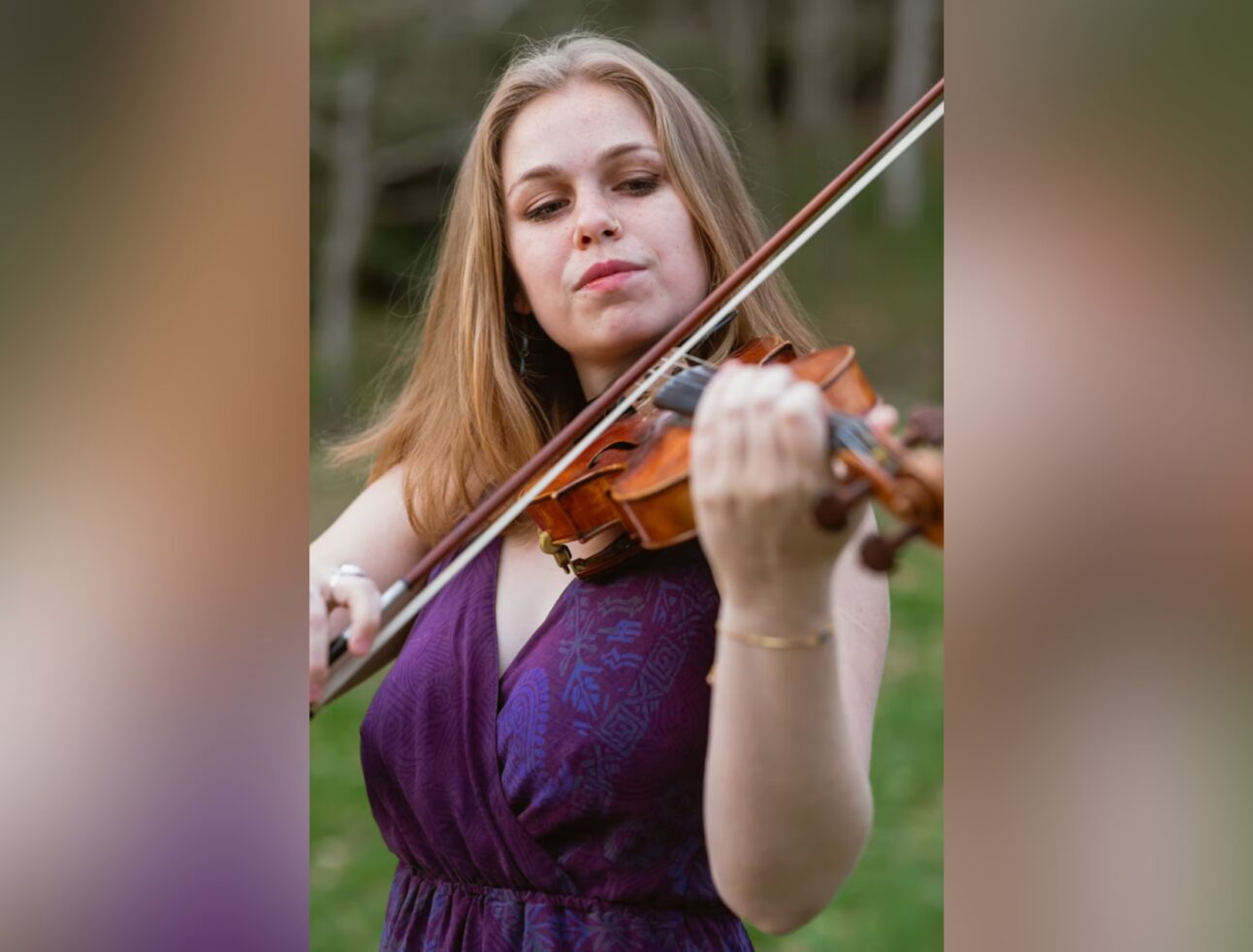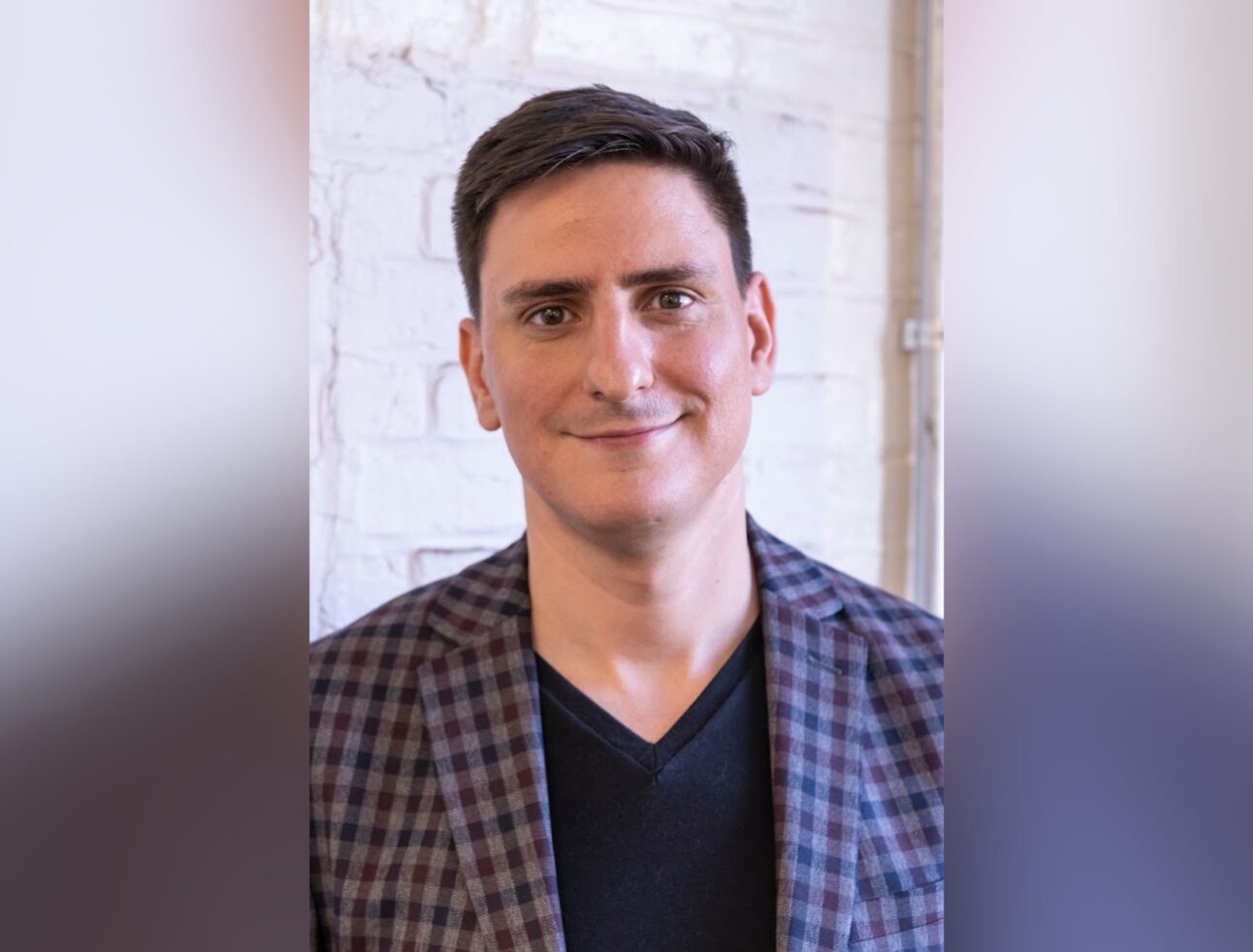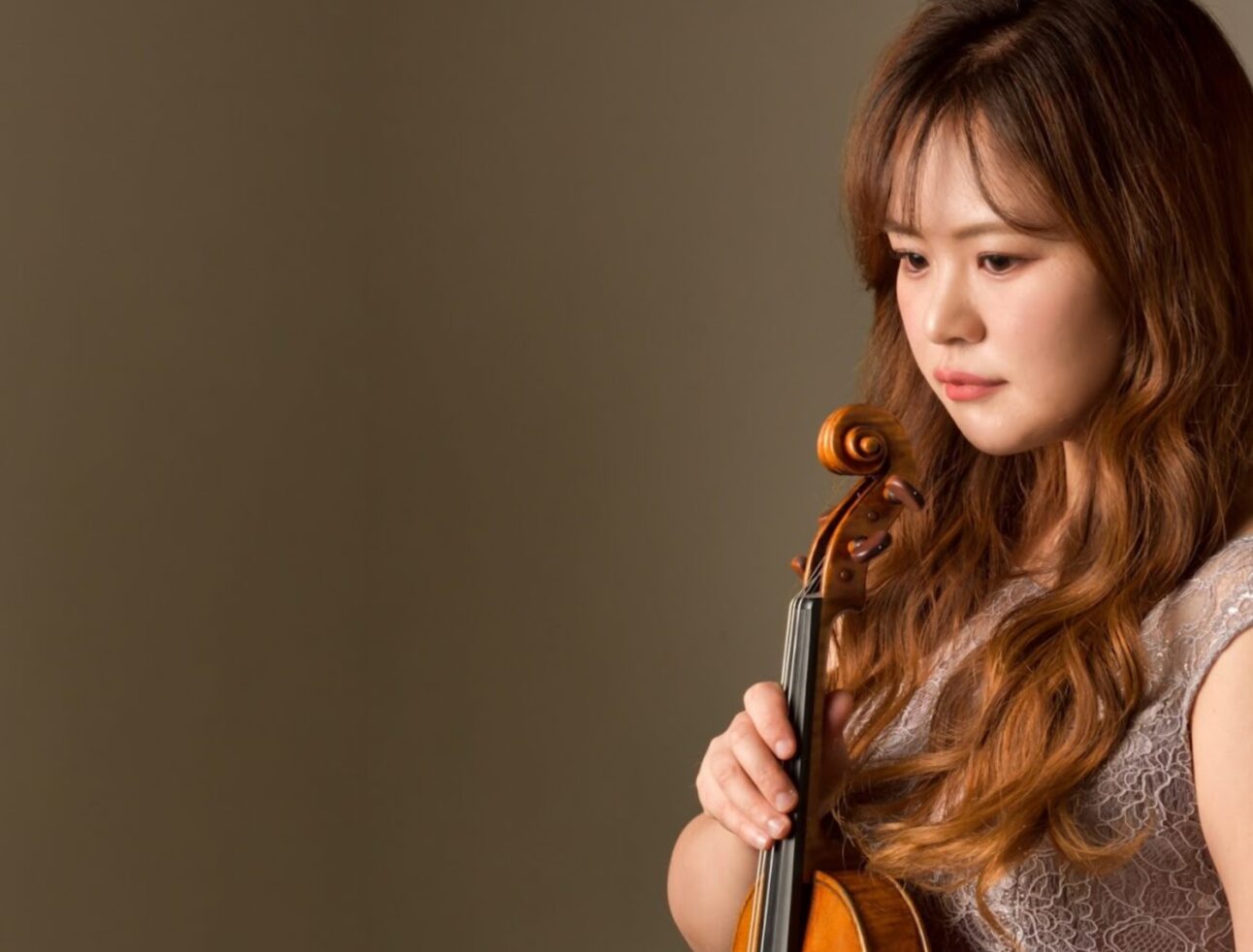Concert featuring the music of NEC’s 2024 Malcolm Peyton Composer Artist-in-Residence Valerie Coleman, as well as Malcolm Peyton’s String Quartet No. 2. Jordan Hall, March 28, 2024. Shown: Valerie Coleman, Michael Gandolfi
Michael Gandolfi’s Ascending Light for organ and orchestra will be performed by Olivier Latry and the Boston Symphony Orchestra, October 10-12.
In 2009, the Boston Symphony Orchestra approached Michael Gandolfi, chair of New England Conservatory’s composition department, about commissioning a work for organ and orchestra.
The request stemmed from the Gomidas Organ Fund in honor of its founder Berj Zamkochian, an Armenian-American organist with ties to the BSO. Before his death in 2004, Zamkochian had approached the Gomidas Fund about commissioning a work to commemorate the 100th anniversary of the 1915 Armenian genocide. Gandolfi was asked to include a statement on the title page of the score noting the commemoration but was otherwise given complete artistic freedom.
Gandolfi says he was apprehensive at first. While he had written a number of orchestral works, including several for the Boston Symphony Orchestra, this was his first time writing for the organ.
“An organ is like its own wind ensemble,” he says. “In a sense, [composing this work] was like combining a wind ensemble with an orchestra, which could be daunting. There’s so much sound potential and there could be an oversaturation.”
While Gandolfi was given creative freedom, he wanted to acknowledge the history and culture of the Armenian people. He thought an Armenian lullaby, played by the organ would hold wide appeal and, for the foundation of the second movement, settled on the well-known lullaby “Tigranakert” named for the ancient capital of Armenia.
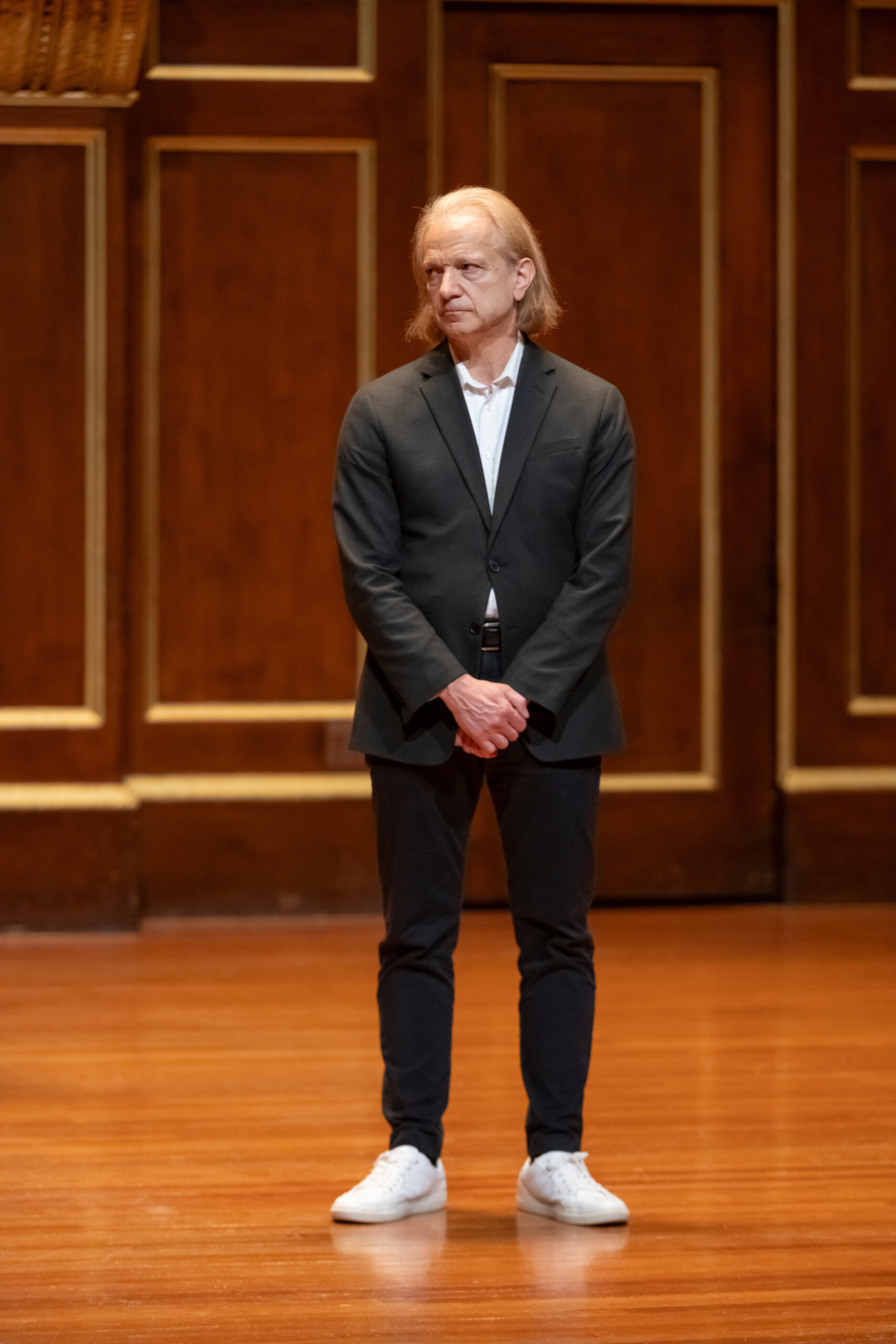
Concert featuring the music of NEC’s 2024 Malcolm Peyton Composer Artist-in-Residence Valerie Coleman, as well as Malcolm Peyton’s String Quartet No. 2. Jordan Hall, March 28, 2024
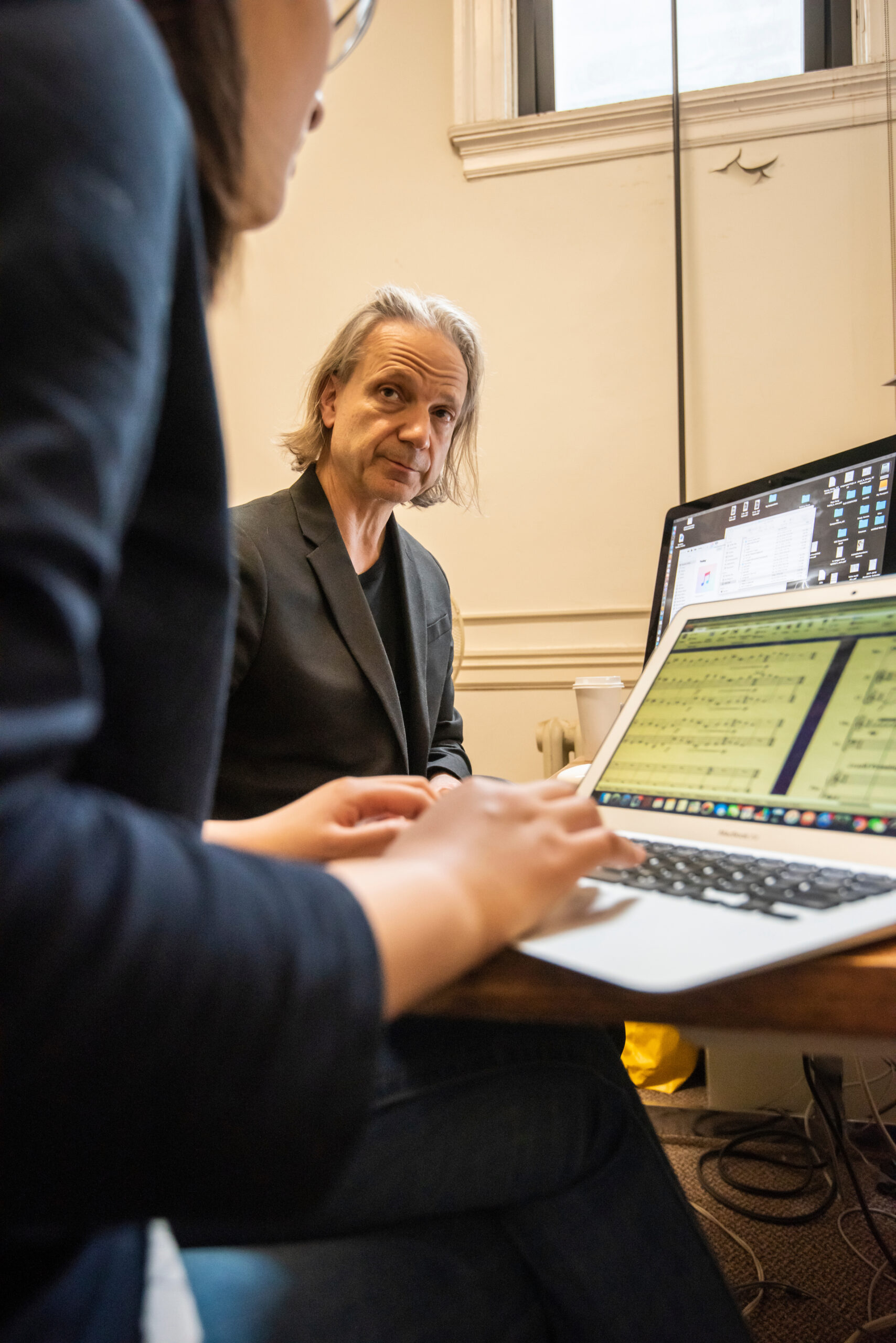
Michael Gandolfi, chair of Composition, teaches a studio lesson. April 30, 2019
The second movement also references a sacred Armenian choral work, “Aravot Lousaber,” which translates as Ascending Light. He transcribed the four-part harmonization from a recording, then added in his own harmonization, creating an ethereal, otherworldly effect. And, in an unexpected twist, Gandolfi later discovered the composer, Vartapet Komitas, is the namesake of the Gomidas Organ Fund.
Gandolfi’s final source of inspiration came from photos of Armenian people who had perished.
“These were vibrant intellectuals and artists, in the prime of their lives. I thought if I had a video montage, what kind of music would accompany their pictures?” he says. “I decided it shouldn’t be something mournful or sad or tragic, because the Armenians survived this, and their culture went on. The life force prevailed.
“So I begin with very powerful music that returns at the end and converges with the religious melody. That was, for me, a symbolic way to show how the life force wins out.”
Gandolfi’s Ascending Light premiered at the BSO in 2015 with Olivier Latry as the featured organist. It has since been performed by the Gewandhaus Orchestra in Leipzig, Germany, and other orchestras around Europe.
Gandolfi has also collaborated with Latry on later additions to Ascending Light, including a set of notations to help organists adapt the work to different instruments.
“[Latry] indicated potential stops, and if a player has an organ with more color, they know how and when to do that,” Gandolfi says. “He’s one of the two organists at Notre Dame Cathedral in Paris, which is quite an honor, and he’s arguably the world’s greatest organist. He’s also just a great spirit and he’s not afraid to share his opinion.”
Latry also advocated for the inclusion of a cadenza—an idea Gandolfi initially resisted.
“Cadenzas tend to be kind of celebratory and fun and virtuosic,” he says. “Because of the nature of the piece, I thought it wasn’t appropriate. But Olivier was pushing me from the beginning, and I finally said I’ll do it—but it would be somewhat subdued, with just a little bit of showiness.”
Latry first performed the piece with the added cadenza at the National Convention of the American Guild of Organists in San Francisco this past summer. He will perform it again this month with the Boston Symphony.
“In the standard repertoire for orchestras and organ, the biggest piece is Saint-Saëns’ Symphony No. 3, which is known as the ‘Organ Symphony,’” Gandolfi says. “My piece will be the first half of the program, and the second half will be the ‘Organ Symphony.’ The Saint-Saëns is such a beautiful piece, and it’s nice to be in such great company with such a renowned work.”
The October 11 performance will include a pre-concert talk with Gandolfi. More Information >
